Bon Bibi reimagined: A feminist tale from the Sundarbans
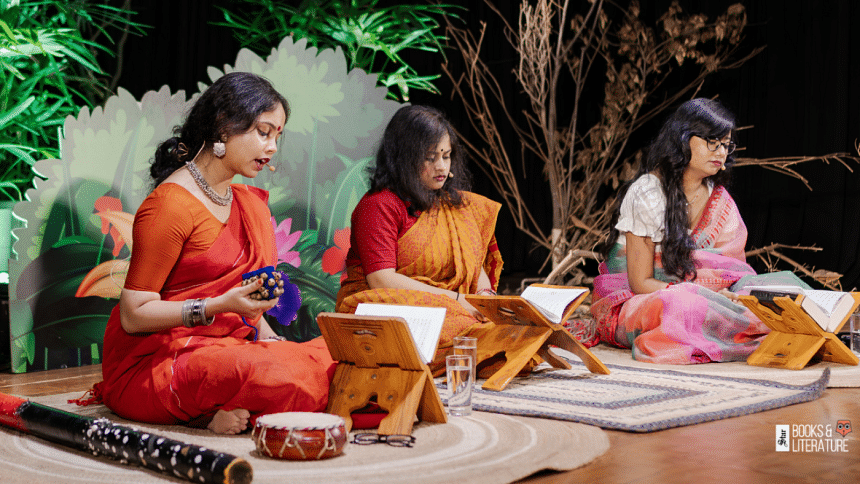
The soft trill of a flute floated in the air of the hall—redolent of rural Bengal. The audience settled in for what would be an enchanting dramatisation of a folk legend told through a feminist lens. This was a syncretic tale of the Sundarbans that was reinterpreted into being at Goethe-Institut Bangladesh on Saturday, June 28, by Folklore Expedition Bangladesh in a puthi path titled "Bon Bibir Jahuranama". The event, co-organised by Sister Library, received such an overwhelming response that a second performance was arranged and the venue had reached its maximum seating capacity. Watching it unfold and explore themes of women's rights to life, land, inheritance, and justice, I could understand why.
Opening notes from Folklore Expedition Bangladesh informed the audience that they were first acquainted with Bon Bibi in Dhangmari village in 2021, and they undertook the journey of bringing this story to the forefront in order to better understand the cultural consciousness of Bengal. With that commenced the performance which was arranged into three parts—storytelling, puthi path, and theory. As such, there were three performers: Nusrat Jahan, Upama Adhikary, and Zakia Tabassum Shoshi. Puthi path is an age-old blend of poetry and music. Originally a form of oral storytelling, it is heavy with South Asian tradition as well as religious values with roots in the Arabian Peninsula.
What struck me, however, was the performance's fresh reinterpretation of a traditional tale—a reinterpretation facilitated by its unique theoretical component. Western feminism and South Asian culture merged as layers of textual meaning were unraveled through references ranging from Adrienne Rich and Simone de Beauvoir, to Judith Butler and even Draupadi from the Mahabharata. Beauvoir's statement, "One is not born, but rather becomes, a woman" and Butler's post-structural feminist assertion that "[g]ender is performative" were invoked to understand the "biplobi" or revolutionary female protagonist Bon Bibi's case—because she was born and raised in the woods with the deer, her language, disposition, and actions were shaped by a non-patriarchal surrounding.
Moreover, the ecofeminist undertone of the tale was emphasised throughout the performance. For instance, the narrator states that Bon Bibi is not only protector of the Sundarbans, but a personification of the jungle, and Bon Bibi herself preaches morals such as "baagh ebong manush jaatey ekshathe boshobaash kore" ("that human and tiger coexist in harmony")—alluding to the endangered Bengal Tiger. Further, the story addresses the problem of land ownership. After asserting that rights favour the man, the king, and the pious, the narrator states that Bon Bibi challenges this socio-religious phenomenon as she did not inherit her land from any man, abandoned as she was in the jungle. The performance also highlighted how religion is a weapon of sociopolitical control. At a time in our country when proposed reforms relating to inheritance law and women's rights are being met with aggressive assault in the name of religion, this seemed particularly pertinent.
What could have been done better at the event, in my opinion, was the setting. The wooden stage was neatly adorned with synthetic greenery, makeshift trees, dead and dry twigs. Books lay half-open on small stands propped on floor mats, upon which the performers would sit and read. Folk musical instruments dotted the floor. All that felt missing was the dim flicker of, perhaps, an oil lamp, which could have recreated the ambience of an ancient storytelling setting better than the bright stage lights.
Syeda Fatema Rahman is a writer from Dhaka, Bangladesh.

 For all latest news, follow The Daily Star's Google News channel.
For all latest news, follow The Daily Star's Google News channel. 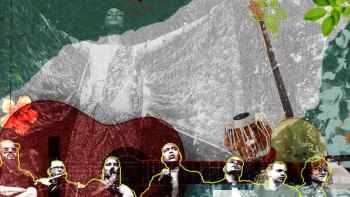
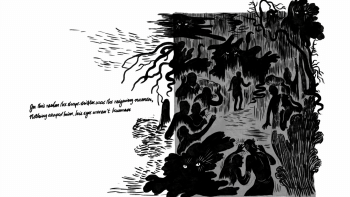





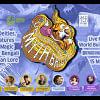


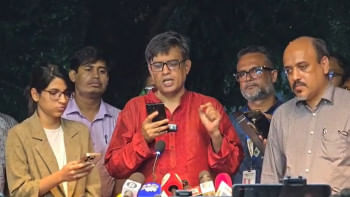
Comments